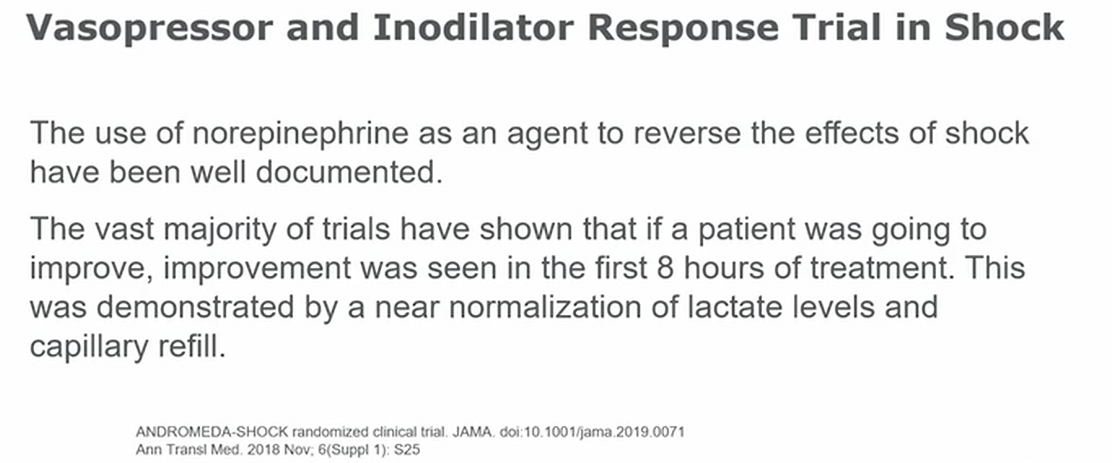Andromeda-SHOCK showed first 8 hours of shock is when improvement happens
- related: shock in icu, cardiogenic shock
- tags: #literature #cardiology

- therapy guided by capillary refill normalization compared to lactate clearance:
- measured by applying firm pressure to the ventral surface of the right index finger distal phalanx with a microscope slide until skin blanching and then maintaining for 10 s, with time for return measured and with an abnormal time considered 3 s or more. This was assessed every 30 min. The two strategies were applied for 8 h after enrollment.
- The primary end point was all-cause mortality at 28 days. Mortality was 34.9% in the capillary refill time group and 43.4% in the lactate clearance group (95% CI, 0.55-1.02; P = .06). In a subsequent analysis of the same data using Bayesian analysis, it was demonstrated that there was a clinically significant difference between the groups, favoring use of capillary refill time to titrate fluid and vasoactive drug therapy in septic shock.234
Links to this note
Footnotes
-
Hernández G, Ospina-Tascón GA, Damiani LP, et al; The ANDROMEDA SHOCK Investigators and the Latin America Intensive Care Network (LIVEN). Effect of a resuscitation strategy targeting peripheral perfusion status vs serum lactate levels on 28-day mortality among patients with septic shock: the ANDROMEDA-SHOCK randomized clinical trial. JAMA. 2019;321(7):654-664. PubMed ↩
-
Jones AE, Shapiro NI, Trzeciak S, et al; Emergency Medicine Shock Research Network (EMShockNet) Investigators. Lactate clearance vs central venous oxygen saturation as goals of early sepsis therapy: a randomized clinical trial. JAMA. 2010;303(8):739-746. PubMed ↩
-
Zampieri FG, Damiani LP, Bakker J, et al. Effects of a resuscitation strategy targeting peripheral perfusion status versus serum lactate levels among patients with septic shock. A Bayesian reanalysis of the ANDROMEDA-SHOCK trial. Am J Respir Crit Care Med. 2020;201(4):423-429. PubMed ↩